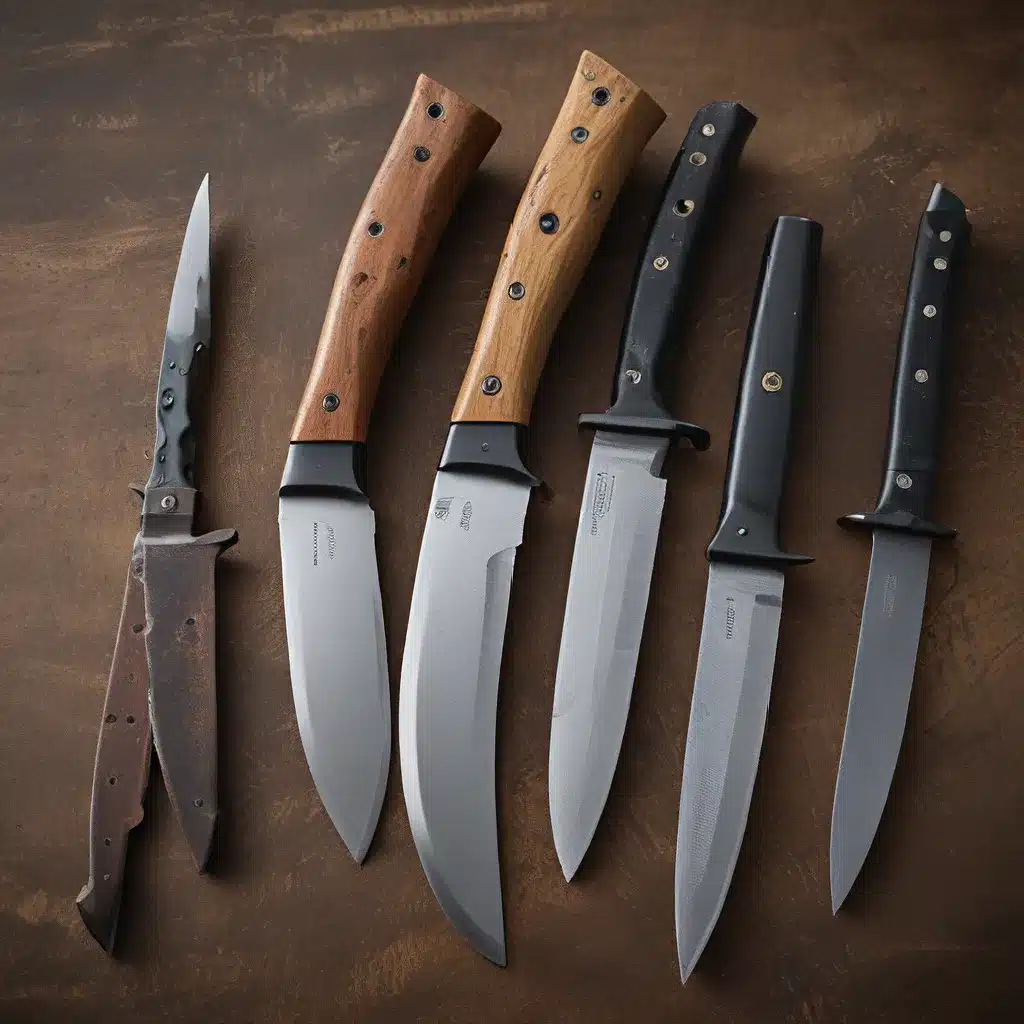
A Steel Odyssey: From Basic Carbon to Advanced Alloys
As an avid knife enthusiast, I’ve always been fascinated by the evolution of blade steels. It’s like watching a technological renaissance unfold right before my eyes. Gone are the days of simple carbon steels – today, we’re navigating a veritable smorgasbord of alloys, each with its own unique properties and performance characteristics.
It all started for me with S30V, the gateway drug of the knife steel world. I remember poring over forums, trying to decipher the mystique behind this seemingly magical material. Little did I know that this was just the tip of the iceberg. As I delved deeper into the world of metallurgy, I discovered a whole universe of steels, each with their own intriguing stories.
The Quest for the Ideal Knife Steel
Every knife aficionado has their own wish list of desired properties – toughness, edge retention, corrosion resistance, and the ever-elusive balance between them. It’s like a quest for the Holy Grail, with each new steel development promising to be the knight in shining armor.
I’ll never forget the day I first heard about CPM-CruWear and CPM-4V. These non-stainless powdered metal steels offered an exceptional toughness-edge retention balance, which had me practically drooling. But then, the stainless steel dilemma reared its head – how do you maintain that level of performance while also ensuring corrosion resistance?
The Birth of MagnaCut: A Breakthrough in Stainless Steel Design
Enter Larrin Thomas, the mastermind behind the Knife Steel Nerds website. I stumbled upon his articles and was immediately captivated by his analytical approach to steel development. When I heard he was working on a new stainless steel that could potentially outshine even the vaunted S35VN and 20CV, my curiosity was piqued.
And then, the news hit – CPM MagnaCut had arrived. As I delved into the details, I was blown away by the sheer elegance of its design. Larrin had managed to do the seemingly impossible – create a stainless steel that combined exceptional toughness, edge retention, and corrosion resistance, all while maintaining a fine, homogeneous microstructure.
Mastering the Art of Carbide Control
The key to MagnaCut’s success lies in Larrin’s innovative approach to carbide control. By minimizing the formation of chromium carbides, he was able to dramatically improve the steel’s corrosion resistance, all while retaining the wear-resistance of the vanadium and niobium carbides.
As I read through the technical details, I couldn’t help but be amazed by the level of precision and foresight that went into this steel’s development. Larrin’s ability to predict and manipulate the microstructural changes during heat treatment is truly remarkable.
Pushing the Boundaries of Stainless Steel Performance
But the real kicker is the performance of MagnaCut. Larrin’s testing has shown that this steel can rival the toughness of the best non-stainless powdered metal steels, while also surpassing the corrosion resistance of even the vaunted Vanax and LC200N steels.
The edge retention is equally impressive, with MagnaCut matching the performance of steels like S90V and S110V – all while maintaining a higher level of toughness. It’s like the steel equivalent of a superhero, able to leap tall buildings in a single bound (or at least, cut through the toughest of materials without breaking a sweat).
Navigating the Heat Treatment Landscape
Of course, with great power comes great responsibility (or in this case, great heat treatment). Larrin has meticulously mapped out the optimal heat treatment parameters for MagnaCut, making it easy for knifemakers to unlock its full potential.
The 2050°F austenitizing temperature and 350°F tempering regimen seem to be the sweet spot, resulting in a hardness range of 61-62.5 HRC with exceptional toughness and corrosion resistance. And for those who want to push the limits, a cryogenic treatment can bump the hardness up to a staggering 64-65 HRC.
A Sharpening and Finishing Delight
But the benefits of MagnaCut don’t stop there. Knifemakers have reported that this steel is an absolute joy to grind and polish, with a finer microstructure that makes it easier to achieve a mirror-like finish.
And let’s not forget about the ease of sharpening. Larrin’s testing has shown that MagnaCut can hold an impressively sharp edge, while still being responsive to honing and stropping. It’s the perfect balance of performance and practicality.
The Future of Knife Steel Innovation
As I reflect on the journey of knife steel development, I can’t help but feel a sense of excitement for what the future holds. With innovators like Larrin Thomas pushing the boundaries of what’s possible, I can only imagine the incredible steels that will emerge in the years to come.
Maybe we’ll see a super-tough, corrosion-resistant version of MagnaCut that can withstand the most demanding environments. Or perhaps a low-cost, high-performance alternative that brings the benefits of this steel to a wider audience. The possibilities are truly endless.
And of course, I can’t wait to get my hands on a MagnaCut knife and see how it performs in real-world situations. I’m sure it will be a game-changer, with the potential to redefine the standard for what a high-end knife should be.
Embracing the Future of Knife Steel
As I close this chapter, I’m reminded of the wise words of John Steinbeck: “In uncertainty I am certain that underneath their topmost layers of frailty men want to be good and want to be loved.” And in the world of knife steels, I believe that underlying desire is for innovation, performance, and excellence.
With the introduction of CPM MagnaCut, Larrin Thomas has taken us one step closer to realizing that dream. And as we continue to forge ahead, I can’t wait to see what other marvels the future of knife manufacturing has in store.
Herman Knives is committed to staying at the forefront of this exciting journey, offering our customers the latest and greatest in knife steel technology. Stay tuned, because the best is yet to come!


